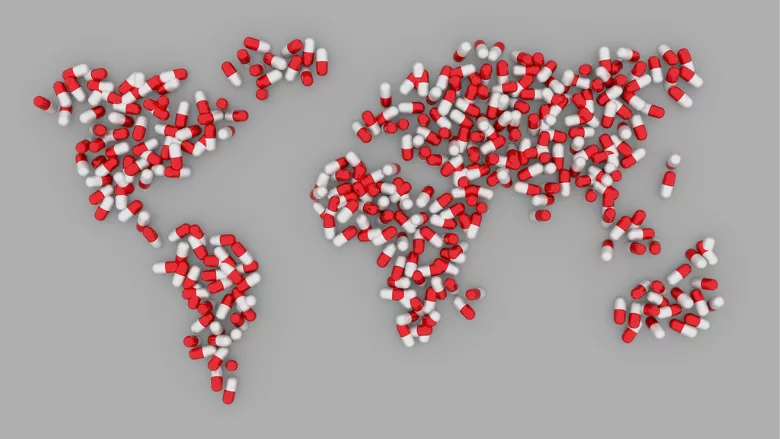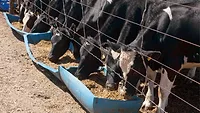Global Organizations Highlight One Health AMR Research Priorities, Includes Agrifood Sector

Image credit: jniittymaa0 via Pixabay
A recent report, titled, A One Health Priority Research Agenda for Antimicrobial Resistance (AMR) has laid out priority research areas for mitigating the rise of AMR at the interface between the agrifood, healthcare, and environmental sectors. AMR is recognized as one of the greatest global public health threats, and the One Health approach considers how resistance to antimicrobials may spread and circulate among humans, animals, plants, and the environment.
The aim of the report is to help experts deliver evidence on research strategies, interventions, and policies to better understand which AMR mitigation strategies are most effective for various stakeholders in different contexts. It is intended to guide countries, research institutes, and funding bodies in conducting and supporting One Health AMR research, as well as to help policymakers, researchers, and the scientific community work together across sectors on solutions that will prevent and mitigate AMR on a national, regional, and global scale.
The report was published by the Quadripartite, which comprises the Food and Agriculture Organization of the United Nations (FAO), the World Health Organization (WHO), the World Organization for Animal Health (WOAH), and the United Nations Environment Program (UNEP). The goal of the Quadripartite is to preserve antimicrobial efficacy and ensure sustainable and equitable access to antimicrobials for responsible and prudent use in human, animal and plant health.
Stakeholder and expert engagement, literature reviews, a global online survey, and a consensus exercise were leveraged to produce the report, which prioritized research areas across five pillars: transmission, integrated surveillance, interventions, behavioral insights and change, and economics and policy. The following priority research areas specifically related to agrifood systems were identified across two of the five pillars:
- Transmission: To what extent are effluents and solid wastes from agrifood systems, and their management and treatment, contributing to the development and circulation of AMR in different geographical settings?
- Interventions: How can existing food production systems be effectively integrated and enhance One Health AMR interventions? What has been the relative impact of infection prevention and control (IPC); farm biosecurity; food safety; water, sanitation, and hygiene (WASH); and integrated pest management (IPM) measures on AMR occurrence?
Also noted, regarding economic policy and change, was the need to identify the potentially negative impacts of changes in antimicrobial use (AMU) on the food supply and management of AMR in the food system. Especially important to understand is how low- and middle-income countries (LMICs) can work towards an enabling environment for AMR prevention and control within their own particular contexts.
Overall, the report consolidates the ten most important research priorities that have the greatest potential for strengthening research capacity. The following consolidated priorities are considered the most actionable, inclusive, and impactful in the field of One Health AMR over a term of 4–8 years:
- Transmission: To what extent do various IPC practices in One Health settings impact the development and circulation of AMR in One Health sectors? What impacts the transmission of resistant microorganisms between humans, animals, plants, and the environment with a focus on conditions relevant to LMICs?
- Integrated Surveillance: What are the optimum strategies and minimum standards (and resources) for adequate laboratory and human resource capacity to establish and maintain quality integrated AMR surveillance systems at scale? How can existing AMR and AMU surveillance data from humans, animals, plants, and the environment be meaningfully triangulated and/or integrated to allow early identification of the development, escalation, or circulation of resistance across One Health sectors?
- Interventions: How can One Health interventions that have proven impactful for AMR control and mitigation most effectively be translated and scaled in different contexts or differently resourced settings? What challenges exist to the systematic collection and analysis of data for risk assessment and intervention impact assessment (epidemiological, economic, and social) in LMICs?
- Behavioral insights and change: How can structural challenges and barriers to behaviors related to AMR be identified, characterized, and assessed in different sociocultural contexts? What strategies can be used to adapt effective behavioral interventions (e.g., immunization) from one context to another (e.g., Africa to Asia, rural to urban, human prescribers to veterinarians, and etc.)?
- Economics and policy: What would a One Health AMR socioeconomic impact assessment based on accurate and cost-effectively collected data (e.g., harmonized methodology and indicators) in low-resource settings optimally look like? How can governments identify, prioritize, and institutionalize the most relevant cross-cutting and sector-specific AMR policy options and regulatory frameworks, and financing strategies to sustainably tackle AMR across One Health sectors, given their different implementation challenges?
Looking for quick answers on food safety topics?
Try Ask FSM, our new smart AI search tool.
Ask FSM →








